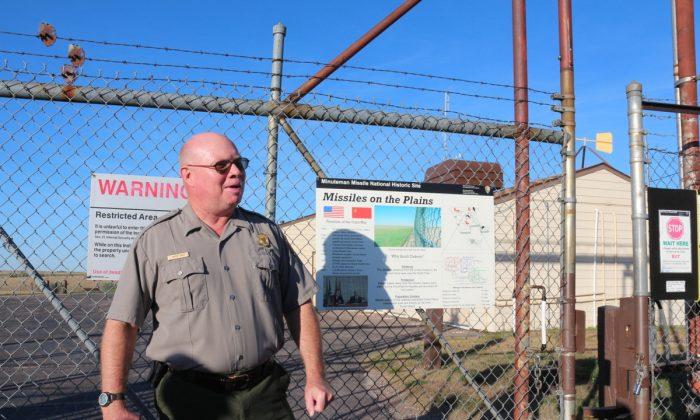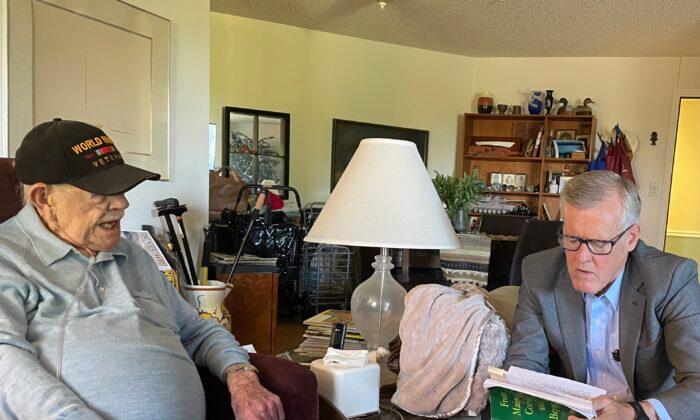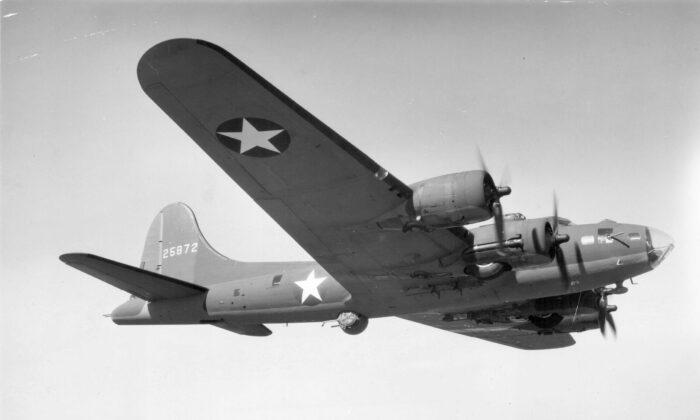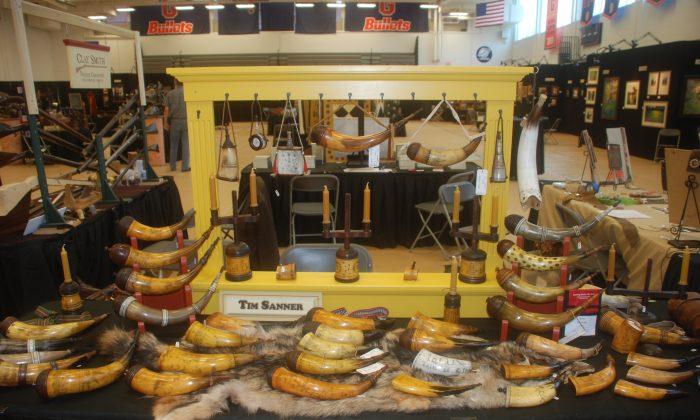“Each missile had a two megaton warhead. That is 60% of all the munitions used by every country in World War II including the two Atomic bombs dropped on Nagasaki and Hiroshima,” Butch Davis said. Butch is an Interpretive Ranger at Flight D-01; Delta flight. The control center remains as evidence of America’s Cold War installations of Minuteman missiles in the Badlands of South Dakota.
Two Minuteman warheads held more explosive power than all munitions used in the most devastating war in history. It gave time to pause, to let the ranger’s words sink in. To try to imagine the situation in 1962 when President John F. Kennedy nearly plunged the world into World War III and could have destroyed the world.
It isn’t much to look at from the outside. A fence, a nondescript 1960s era building. What it contained was the underground control center for missiles once aimed at the Soviet Union. “There were 150 Missiles in western South Dakota. They were placed over 13,500 square miles, an area the size of Maryland. Three Air Force squadrons manned 150 missiles. Does anyone know where Minuteman came from?” Butch Davis asked.
“It is a Revolutionary War term. These missiles were kept fueled and armed in their silos, ready to go at the turn of a key. The hub of the wheel that controlled ten missiles was right here. Each of the three Air Force squadrons had responsibility for 50 missiles. The northern tier of the U.S. went on alert in October 1962. President Kennedy said these missiles were our ace in the hole.”
We entered what was once the military police control room. Another nondescript room with large glass windows. “This is the launch control facility. Each one of these was staffed by eight enlisted personnel and six Air Force policemen. They lived here three days on and three off. The Missileers were on site 24 hours then off 24- or 36 hours. The control room is down 31 feet,” Butch explained.
Visitors are split up into groups of six. Only a handful can fit in the elevator cage that descends below to the control room. “They are called flights. Each control center has ten flights. There are 15 control centers. The missiles would be launched and travel 700 miles above the Earth. They were reentry vehicles that attained a speed of 15,000 miles per hour. It would have taken 30 minutes to reach the Soviet Union,” the ranger added.
As the elevator made slow progress reinforced concrete floors appeared through the cage. Once at the control room level the ranger opened the cage, instructed visitors not to touch anything, then ushered the way past a huge steel vault door.
“The door weighs eight tons. It would not do any good to attack it. It would take so much explosive to blow it open that it would bring down the whole building. While some began to feel claustrophobic the ranger reassured that it only took seven pounds of pressure to move the gigantic vault door to access the control room. There was no handle on the outside.
Air to the Missileers was filtered to protect from biological and nuclear contaminants. The complex had an oxygen making machine. “Turn the crank for five minutes and it would produce forty minutes of oxygen. There are also shock absorbers in the construction. This room can move two feet in either direction. This control center is 31 feet deep, most were deeper. It was under five minutes time from the moment the Strategic Air Command (SAC) in Omaha, Nebraska gave the order until a missile took off,” Butch explained.
The complex underground was amazing. Huge banks of computers, pilot’s chairs, a simple bunk bed, red panels and posts twelve feet apart where the Missileers would have to insert their keys to activate the missiles under their control.
“There is more computing power in your cell phones and digital cameras than all the computers here,” Butch Davis said. The key pads were deliberately kept twelve feet apart so that it required both Missileers to insert their keys separately and at the same time to activate the missile launch procedure. “Turn the keys and a ’missiles away' light would go on.”
The ranger explained that it was a volunteer position. He said that there were plenty of volunteers since the alternative was service in Vietnam or Korea. It was instructive to learn that construction on the Minuteman missile silos and control centers began in 1961 and finished in 1963 under budget and ahead of schedule.
“Only once did the Missileers hear that warning tone, then ‘Standby for the President of the United States.’” Carla Seybold, a part time ranger, said. “President Jimmy Carter was at SAC headquarters and wanted to try it. When he got on the phone, the Missileeers had their check lists ready. What they heard was his twang, ”Hi y'all. I’m at SAC. They are showing me around and I wanted to see how this worked.” Seybold imitated the former President. Perhaps he was oblivious to the fact that each of the two megaton missiles was 70 times more powerful than the Little Boy Atomic bomb dropped on Japan.
Some of the missiles were used to launch space vehicles when disarmament came in 1991. The nuclear warheads were destroyed. The anecdote about President Carter, while funny, underscored a lack of conscientiousness about the power each missile contained. It was enough to destroy a 40 square mile area. Each of the 80 foot deep missile silos was covered by a 90 ton lid door. Gas charges would be used to fling the heavy door covering the missile silo aside before firing.
Upstairs rangers take visitors on a tour of the living quarters of the people that staffed each control center. There are rooms for the commander, for the air police, a dining room and recreation room. All 1960s style with a letter insert menu posted on the wall. Ample comfort for personnel and, as with the rest of the aboveground structure , nondescript.
The National Park Service is responsible for the disarmed missile control center. Visitor interest increased to 75,000 last year. An educational center is being built to be completed in 2014. That center will have interactive displays and a Missileer’s chair visitors can sit in. There will be a phone that can be picked up to hear actual conversations with control. A blast radius will be shown on screens that will illustrate the power and intensity of these weapons of mass destruction.
Delta 01 is 17 miles from Wall, South Dakota, 73 miles from Rapid City. A sign on the gate gives the distances. The sign also proclaims that this facility, once central to America’s nuclear response to Soviet aggression, is 5,166 miles from Moscow and 5,708 miles from Kartaly, the Soviet Missile Base. Oh yes, the Russians had missiles aimed at us as well.






Friends Read Free